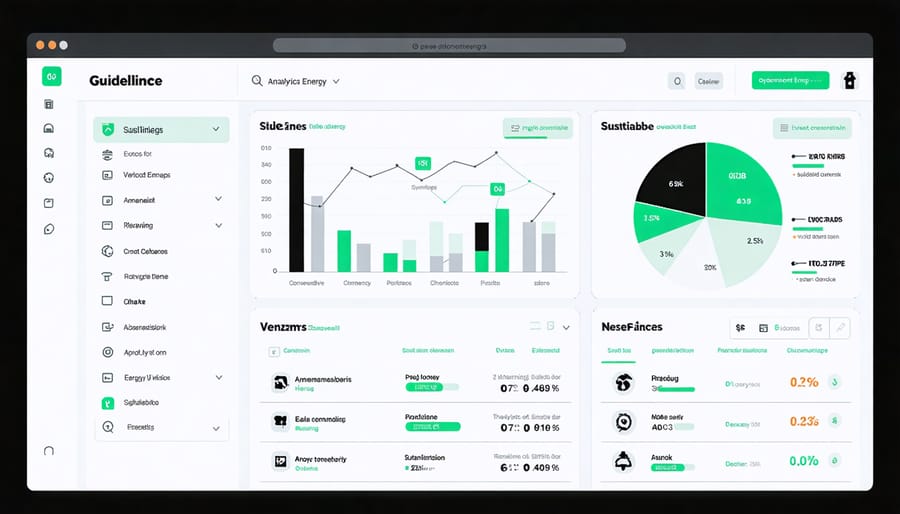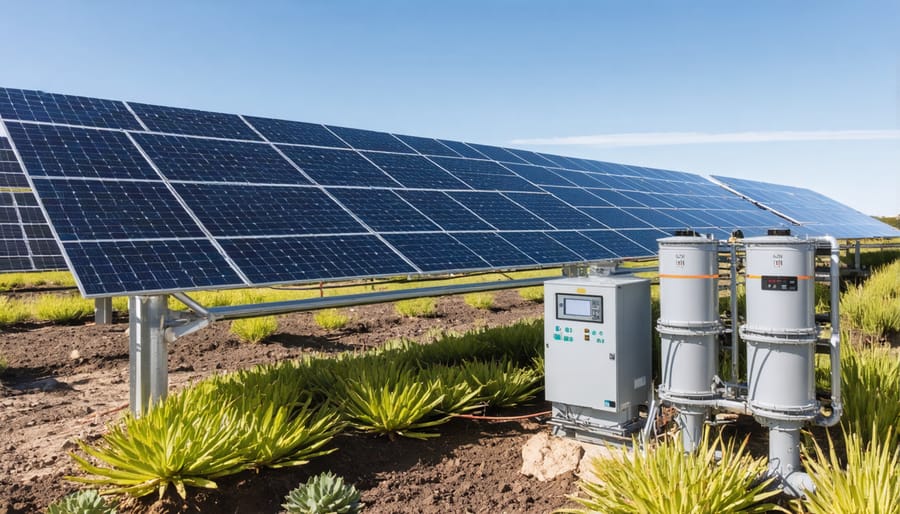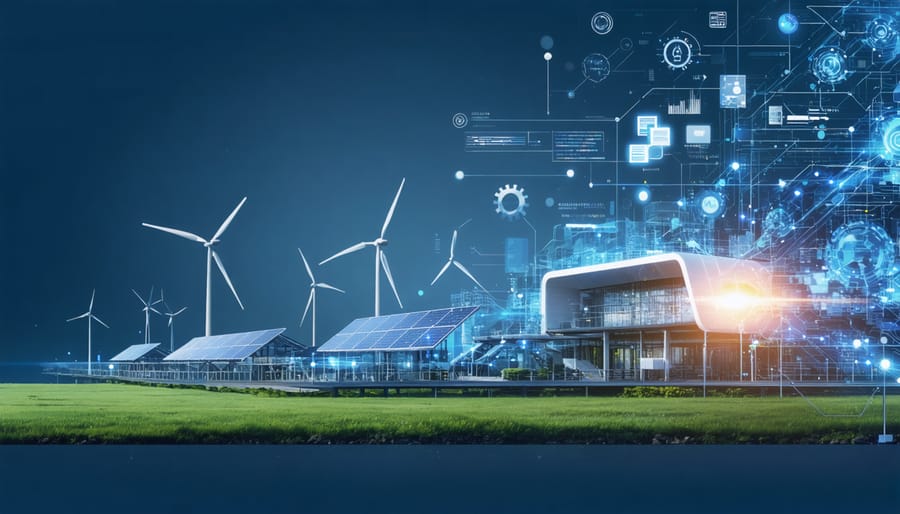Digital transformation isn’t just about implementing new technologies—it’s about fundamentally reimagining how organizations create and deliver value in the digital age. As Australian businesses navigate an increasingly connected world, the imperative to transform has never been more urgent. Leading organizations are discovering that successful digital transformation combines strategic technology adoption with profound cultural change, resulting in more agile, efficient, and sustainable operations.
Research shows that companies embracing comprehensive digital transformation are twice as likely to report significant revenue growth compared to their peers. Yet, despite this compelling evidence, 70% of digital transformation initiatives fall short of their objectives. The difference between success and failure often lies not in the technology itself, but in how organizations approach the human elements of change.
For Australian businesses, particularly in the sustainable energy sector, digital transformation presents a unique opportunity to align operational efficiency with environmental responsibility. By leveraging data analytics, artificial intelligence, and automated systems, organizations can optimize resource usage, reduce waste, and create more sustainable business models while maintaining competitive advantage in a rapidly evolving marketplace.
This strategic evolution requires a carefully orchestrated balance of technological innovation, organizational change management, and sustainability principles—a transformation that promises to reshape not just how we work, but how we create lasting value for our stakeholders and the planet.
The Digital Evolution of Sustainable Energy Organizations
Current Digital Challenges in the Bioenergy Sector
The bioenergy sector currently faces several digital hurdles that present both challenges and opportunities for growth. Many Australian facilities still rely on legacy systems that weren’t designed for today’s interconnected operations, making real-time monitoring and optimization difficult. Data silos remain a significant obstacle, with different departments often using incompatible software systems that prevent seamless information sharing and analysis.
Cybersecurity concerns have also emerged as a critical challenge, particularly as more bioenergy facilities integrate smart technologies and remote monitoring capabilities. The need to protect sensitive operational data while maintaining efficiency has become paramount, especially for facilities connecting to smart grids and energy trading platforms.
However, these challenges are driving innovation. Forward-thinking organizations are implementing cloud-based solutions that enable better data integration and analysis. Mobile applications are transforming maintenance procedures, while artificial intelligence is helping optimize feedstock management and production processes. The industry is also seeing increased adoption of digital twin technology, allowing facilities to simulate and improve operations without disrupting actual production.
The path forward lies in embracing these digital solutions while ensuring staff receive proper training and support. Many organizations are finding that a staged approach to digital transformation helps manage both technical and cultural changes effectively.
Key Digital Platform Integration Points
In today’s sustainable energy landscape, successful digital transformation hinges on seamlessly connecting key platforms that drive operational efficiency and environmental impact. At the heart of this integration lies the smart grid management system, which serves as the central nervous system for energy distribution and monitoring. This platform must interface effectively with customer relationship management (CRM) systems to enable personalized energy solutions and usage insights.
Asset management platforms play a crucial role by tracking renewable infrastructure performance and maintenance needs in real-time. These systems need to communicate with both environmental monitoring tools and predictive analytics engines to optimize energy generation and storage capabilities.
Data visualization dashboards serve as the bridge between technical operations and stakeholder engagement, making complex energy data accessible and actionable. Mobile applications for field workers and customers represent another vital touchpoint, enabling real-time reporting and consumption monitoring.
The integration of these platforms must prioritize cybersecurity while maintaining compliance with Australian energy regulations. Successful organizations typically implement cloud-based solutions that allow for scalability and remote access, essential features in our vast Australian landscape.

Behavioral Change Through Digital Innovation

Employee Adoption Strategies
Successfully driving digital transformation requires a thoughtful approach to employee engagement and adoption. Organizations can foster enthusiasm for new digital tools by implementing a combination of strategic initiatives that prioritize user experience and demonstrate clear benefits, much like how making smart energy choices leads to sustainable outcomes.
Start by identifying digital champions within each department who can serve as peer mentors and advocates for new technologies. These champions should receive comprehensive training and support to help guide their colleagues through the transition. Creating a buddy system where tech-savvy staff members partner with those less confident can build trust and reduce resistance to change.
Implement a structured onboarding program that breaks down complex digital processes into manageable steps. Regular training sessions, hands-on workshops, and accessible support resources help employees build confidence gradually. Celebrate small wins and share success stories across the organization to maintain momentum and showcase the practical benefits of digital adoption.
Consider gamification elements to make the learning process more engaging. Create friendly competitions between teams, offer recognition for digital milestones, and provide incentives for mastering new tools. Regular feedback sessions and surveys help identify pain points and opportunities for improvement, ensuring the transformation journey remains responsive to employee needs.
Most importantly, maintain clear communication about how digital tools align with sustainability goals and contribute to the organization’s broader mission. When staff understand the connection between digital efficiency and environmental impact, they’re more likely to embrace the change with enthusiasm.
Measuring Digital Implementation Success
Measuring the success of digital transformation requires a balanced approach that combines quantitative metrics with qualitative indicators. Organizations should establish clear KPIs aligned with their sustainability goals while monitoring the lasting behavioral change within their teams.
Key performance indicators typically include adoption rates of new digital tools, reduction in paper-based processes, and improvements in operational efficiency. For Australian organizations, measuring success might involve tracking energy savings through smart building management systems, monitoring remote work effectiveness, and analyzing digital customer engagement metrics.
Success metrics should focus on both immediate wins and long-term impact. Consider measuring:
– Employee engagement and digital literacy levels
– Process automation efficiency gains
– Carbon footprint reduction through digital solutions
– Customer satisfaction with digital services
– Cost savings from digitalized operations
– Time saved through streamlined workflows
Organizations should implement regular pulse checks through surveys and feedback sessions to gauge cultural adaptation. Digital dashboards can provide real-time visibility into these metrics, enabling quick adjustments and continuous improvement.
Remember that success looks different for each organization. While some might prioritize operational efficiency, others might focus on environmental impact reduction. The key is selecting metrics that align with your organization’s unique digital transformation goals and sustainability objectives.
Success Stories: Australian Organizations Leading the Way
Case Study: Rural Bioenergy Facility
The transformation of the Goulburn Valley Bioenergy Facility showcases how digital innovation can revolutionize rural energy production. Initially operating with manual monitoring systems in 2018, the facility embarked on an ambitious digitalization project to optimize its waste-to-energy conversion process.
By implementing IoT sensors throughout the anaerobic digestion system, the facility now captures real-time data on temperature, pH levels, and biogas production. A custom-built dashboard enables operators to monitor and adjust parameters remotely, reducing the need for on-site personnel by 40%.
The facility’s cloud-based management system integrates with local farmers’ waste collection schedules, optimizing feedstock delivery and storage. Smart algorithms predict maintenance needs and potential system failures, resulting in a 25% reduction in downtime and a 15% increase in overall energy output.
Perhaps most significantly, the digital transformation has improved the facility’s community engagement. A public-facing app allows local residents to track the facility’s environmental impact, showing real-time carbon emission reductions and equivalent trees saved. This transparency has fostered strong community support and encouraged more farmers to participate in the waste-to-energy program.
The success of this digital transformation has made the facility a model for rural bioenergy projects across Australia, demonstrating how smart technology can enhance both operational efficiency and sustainability outcomes.

Case Study: Urban Energy Initiative
The City of Brisbane’s recent digital transformation initiative serves as a compelling example of successful organizational change in an urban environment. In 2021, the city launched an integrated smart energy management platform that connected over 1,000 municipal buildings and public facilities to a central monitoring system.
The platform implementation followed a three-phase approach, starting with energy consumption monitoring, followed by automated optimization, and culminating in predictive maintenance capabilities. Key to its success was the emphasis on user engagement, with facility managers receiving specialized training through virtual reality simulations and interactive dashboards.
Within 18 months of implementation, the initiative achieved a 28% reduction in energy consumption across connected facilities. The platform’s machine learning algorithms identified peak usage patterns and automatically adjusted building systems, while real-time data visualization helped staff make informed decisions about energy usage.
Perhaps most notably, the project’s success stemmed from strong leadership commitment and clear communication channels. Regular feedback sessions and a dedicated digital transformation team ensured that technological changes aligned with organizational culture and operational needs. The initiative has since become a model for other Australian cities pursuing similar digital transformation goals in their sustainability efforts.
Implementation Framework for Digital Success
Assessment and Planning Phase
The foundation of successful digital transformation lies in a thorough assessment of your organization’s current digital capabilities and readiness for change. Begin by conducting a comprehensive digital maturity audit that evaluates your existing technology infrastructure, workforce skills, and operational processes. This assessment should identify gaps between your current state and desired digital future, while considering your sustainability objectives.
Create a detailed inventory of your digital assets, including hardware, software, and data management systems. Pay special attention to areas where manual processes can be automated or where legacy systems might be holding back progress. Consider implementing standardized assessment tools like the Digital Transformation Readiness Index to benchmark your organization against industry standards.
Develop a clear transformation roadmap that aligns with your organization’s sustainability goals and business objectives. This plan should include realistic timelines, resource allocation, and specific milestones. Prioritize initiatives based on their potential impact and feasibility, ensuring that quick wins are balanced with longer-term strategic projects.
Engage stakeholders early in the planning process through effective employee engagement strategies to build support and gather valuable insights. Consider forming a dedicated digital transformation team that includes representatives from various departments to ensure diverse perspectives are considered.
Remember to factor in risk assessment and mitigation strategies, particularly concerning data security, regulatory compliance, and environmental impact. Your plan should be flexible enough to adapt to changing circumstances while maintaining focus on your core transformation objectives.
Execution and Monitoring Strategies
Successful digital transformation requires a well-structured execution plan and robust monitoring framework. Start by establishing clear milestones and key performance indicators (KPIs) that align with your sustainability goals. These might include metrics like paper reduction, energy efficiency improvements, or digital adoption rates across departments.
Create a dedicated transformation team comprising representatives from various departments, ensuring diverse perspectives and skill sets. This team should meet regularly to track progress, address challenges, and adjust strategies as needed. Implement a phased approach, beginning with pilot projects in specific departments before rolling out initiatives organization-wide.
Regular monitoring is crucial for success. Utilize digital dashboards and analytics tools to track real-time progress and identify areas requiring attention. Schedule monthly reviews to assess both quantitative metrics and qualitative feedback from employees and stakeholders. This data-driven approach helps maintain momentum while ensuring alignment with environmental objectives.
Employee engagement is vital throughout the process. Establish feedback channels and regular check-ins to address concerns and gather suggestions. Consider implementing a reward system that recognizes teams and individuals who champion digital adoption and sustainable practices.
Remember to document lessons learned and success stories, creating a knowledge base for future initiatives. This approach not only helps maintain institutional memory but also provides valuable insights for other organizations embarking on similar transformational journeys.
As we look to the future of digital transformation in Australia’s sustainable energy sector, the path forward is both challenging and promising. Organizations that successfully embrace digital innovation while maintaining their sustainability commitments will lead the way in shaping our energy landscape. The integration of smart technologies, data analytics, and automated systems has already demonstrated significant improvements in operational efficiency and environmental outcomes across the sector.
The key to successful digital transformation lies in a balanced approach that considers both technological advancement and human factors. Organizations must continue to invest in upskilling their workforce, fostering a culture of innovation, and maintaining clear communication throughout the transformation journey. The Australian renewable energy sector, in particular, stands to benefit enormously from these digital initiatives, with potential for improved grid management, enhanced energy storage solutions, and more efficient distribution systems.
Looking ahead, we can expect to see increased adoption of artificial intelligence, blockchain technology, and Internet of Things (IoT) solutions driving further innovations in sustainable energy. Organizations that remain agile, embrace change, and prioritize both digital excellence and environmental responsibility will be best positioned to thrive in this evolving landscape. The future of sustainable energy is digital, and the transformation journey is just beginning.

